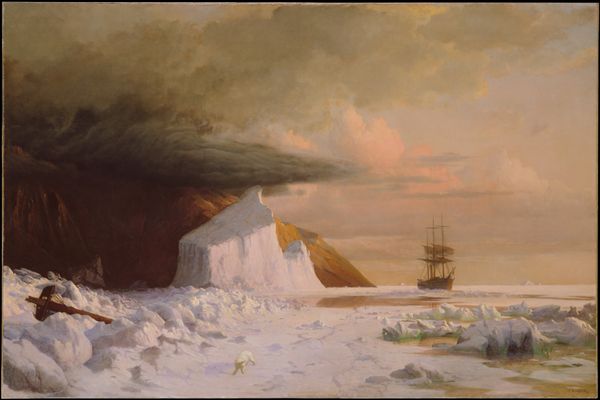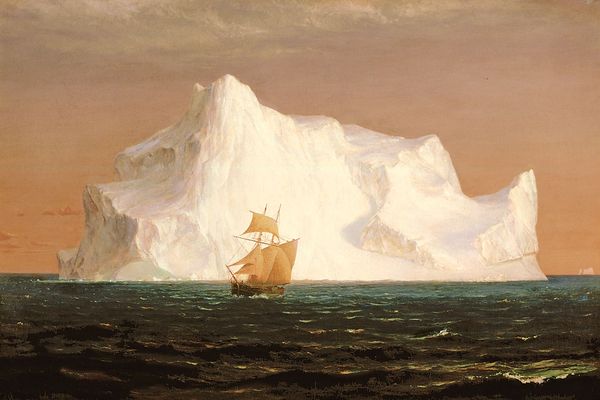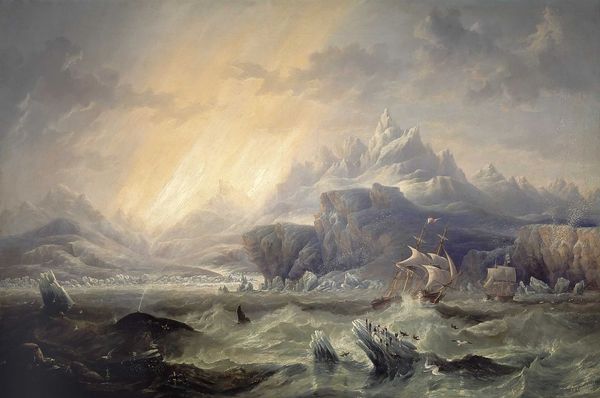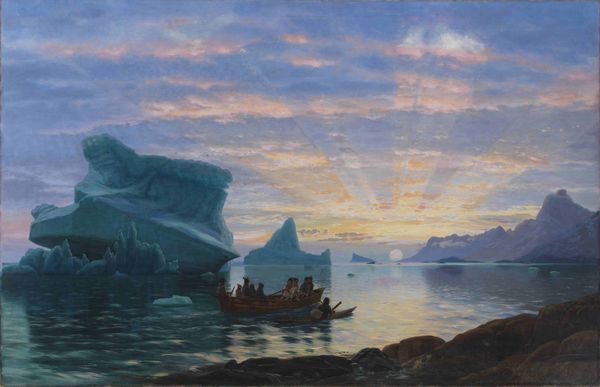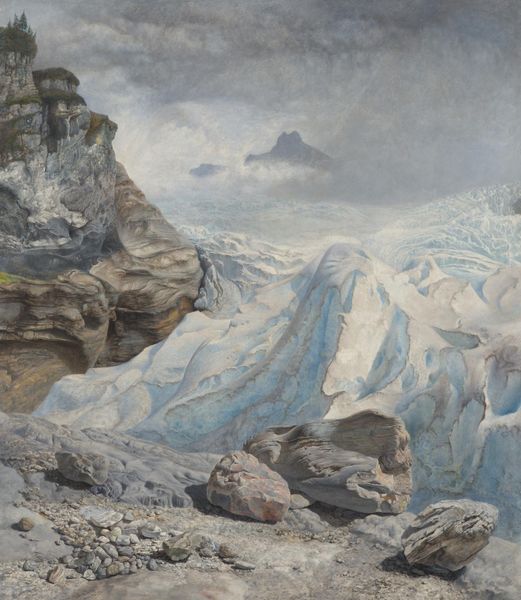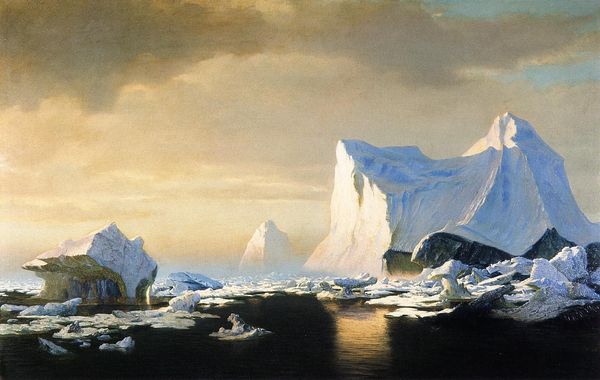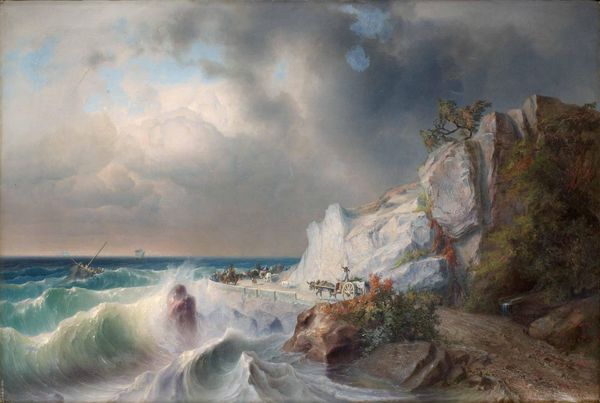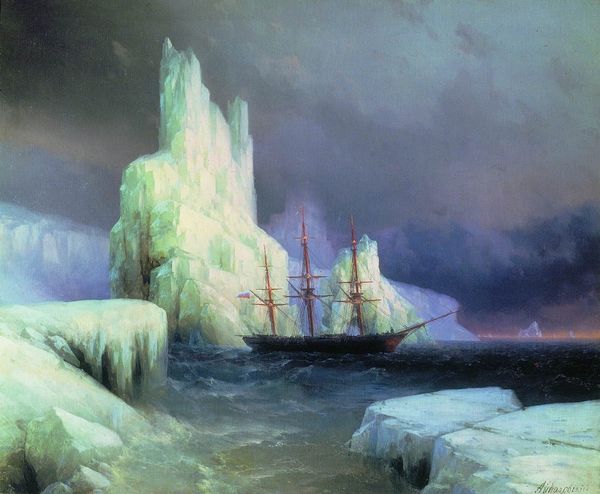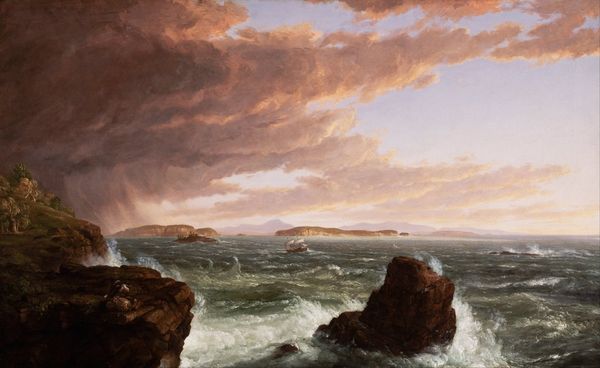
Copyright: Public domain
Curator: This is Frederic Edwin Church's "The Icebergs," painted in 1861. An oil on canvas that captures the raw, imposing beauty of the Arctic landscape. Editor: What immediately strikes me is the drama. The subdued palette, the towering ice formations, and the wrecked ship in the foreground all convey a sense of sublime power and, frankly, desolation. Curator: Indeed. Observe how Church employs a high degree of realism. The textures of the ice, the subtle gradations of light, and the atmospheric perspective create a palpable sense of depth and mass. It exemplifies the Hudson River School's dedication to detailed observation. Editor: And that devotion served a larger purpose, didn't it? This work appeared on the eve of the Civil War and reflected heightened American anxieties about political turbulence—manifest destiny challenged. The presence of that wreckage could symbolize disruption and failure, resonating deeply within its historical moment. Curator: You're suggesting the work carries sociopolitical weight. While that may be the case, I believe its true power lies in the way it confronts the viewer with elemental forms. The jagged edges of the ice contrast sharply with the smooth expanse of water and sky. The use of chiaroscuro enhances this visual tension. Editor: But isn’t that very tension inherently linked to cultural forces? This image visualizes the "sublime"—a popular 19th-century idea regarding the awe and terror induced by nature's overwhelming scale. That terror becomes particularly potent considering how that generation also engaged with colonial expansion. Curator: I can grant that "The Icebergs" certainly taps into the aesthetics of the sublime. Look at the composition. Church masterfully directs our eye, using linear perspective to amplify the distance and underscore our insignificance within this vast space. It is a lesson on the very form that speaks volumes beyond explicit sociopolitical themes. Editor: Yet Church’s approach—the meticulous detail coupled with grand spectacle—feels inextricably tied to America's 19th-century desire to both document and dominate nature. Perhaps these imposing icy structures symbolize the boundaries of expansion, creating tension through realism and dramatism. Curator: A compelling consideration. My concentration on structure has opened another perspective onto these imposing forms. Editor: Likewise, my reading of historical undercurrents benefits from examining how Church manipulated artistic strategies to craft such lasting emotional impact.
Comments
No comments
Be the first to comment and join the conversation on the ultimate creative platform.
